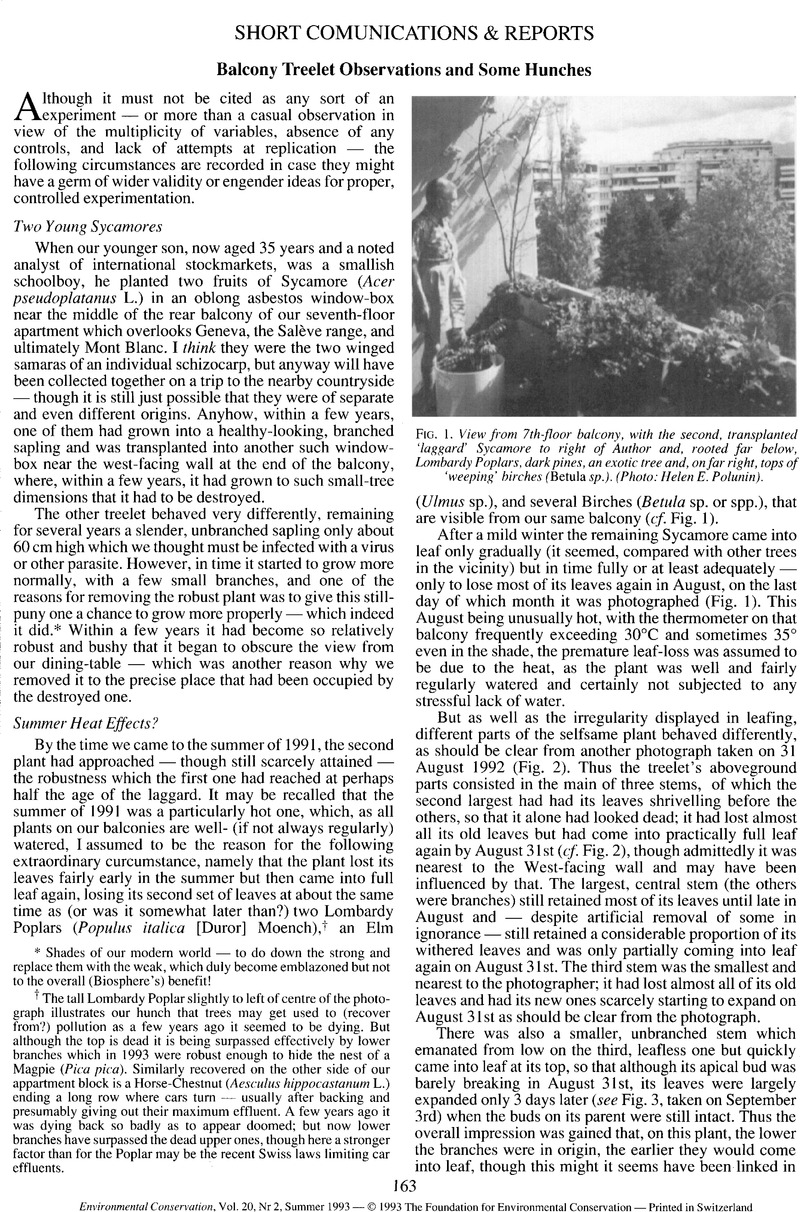No CrossRef data available.
Published online by Cambridge University Press: 24 August 2009

* Shades of our modern world — to do down the strong and replace them with the weak, which duly become emblazoned but not to the overall (Biosphere's) benefit!
† The tall Lombardy Poplar slightly to left of centre of the photograph illustrates our hunch that trees may get used to (recover from?) pollution as a few years ago it seemed to be dying. But although the top is dead it is being surpassed effectively by lower branches which in 1993 were robust enough to hide the nest of a Magpie (Pica pica). Similarly recovered on the other side of our appartment block is a Horse-Chestnut (Aesculus hippocastanum L.) ending a long row where cars turn — usually after backing and presumably giving out their maximum effluent. A few years ago it was dying back so badly as to appear doomed; but now lower branches have surpassed the dead upper ones, though here a stronger factor than for the Poplar may be the recent Swiss laws limiting car effluents.